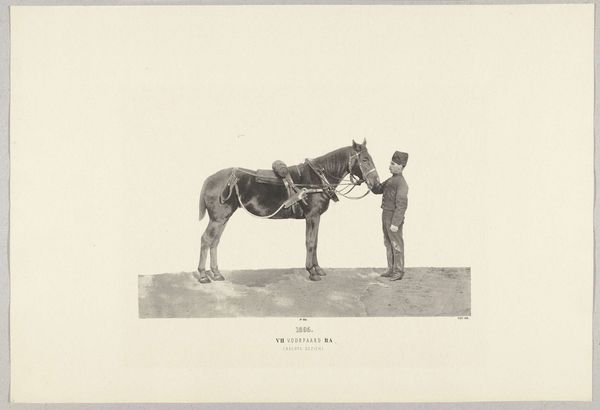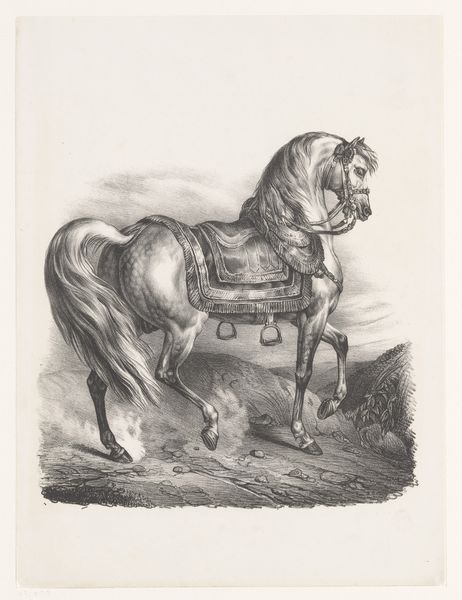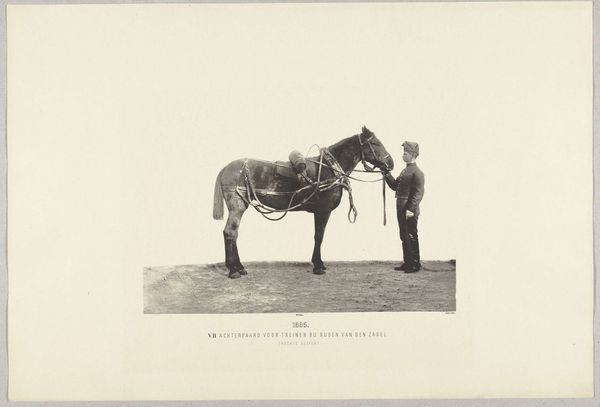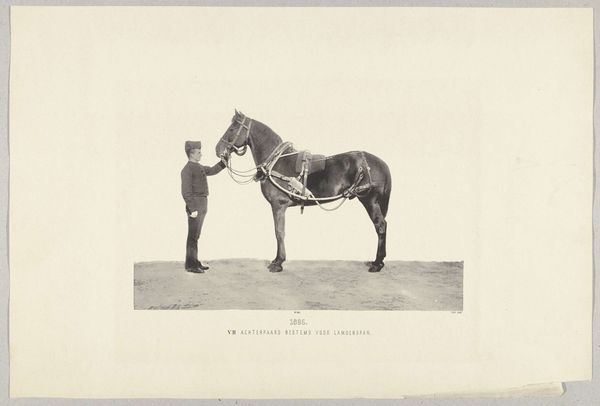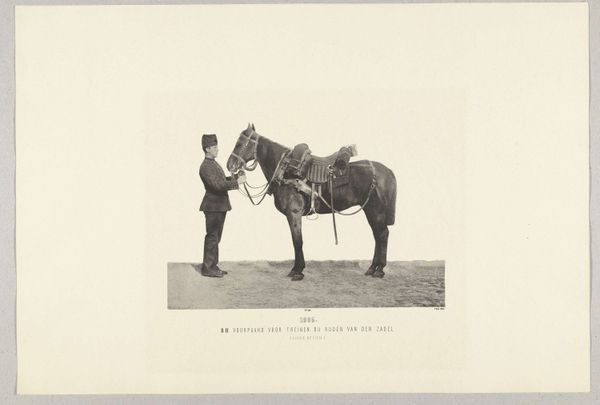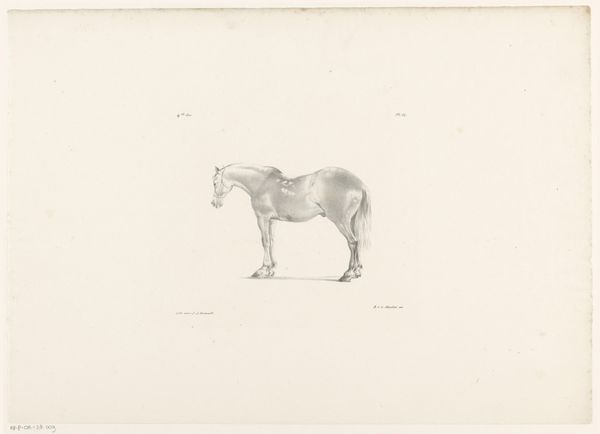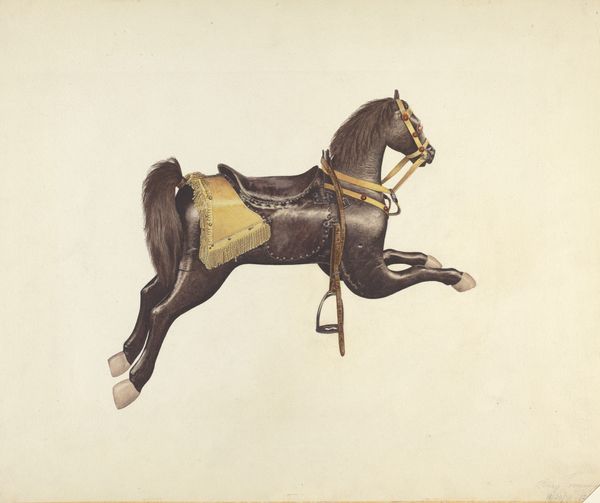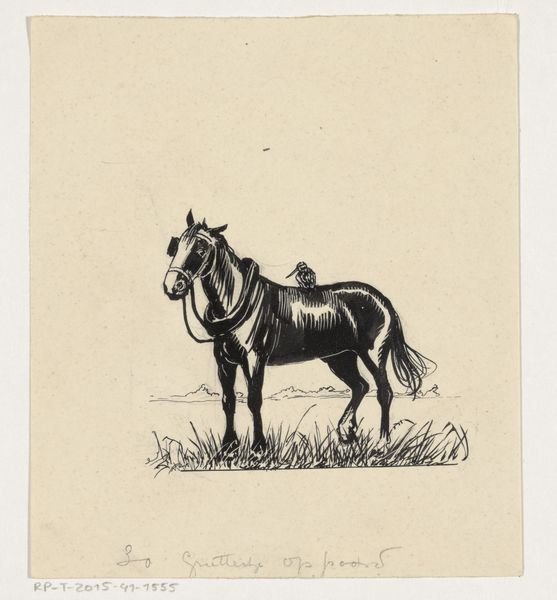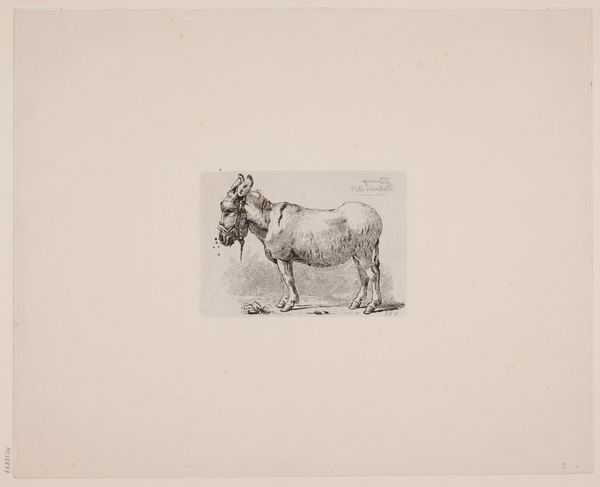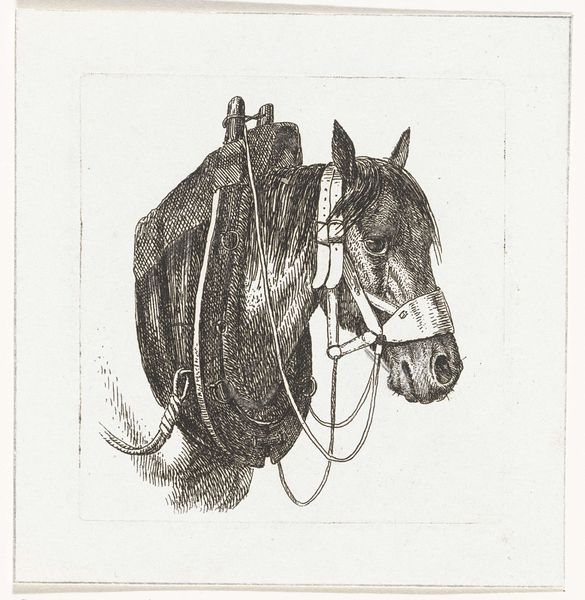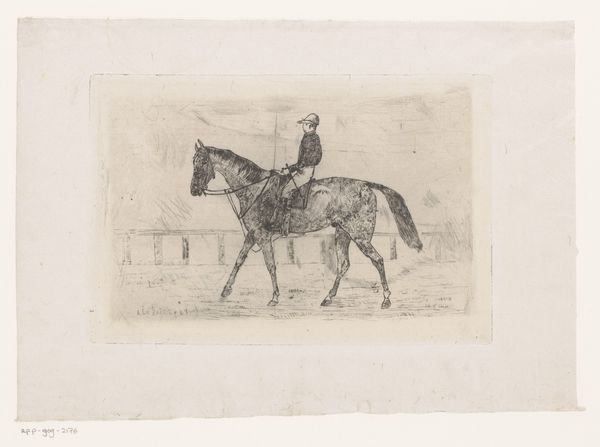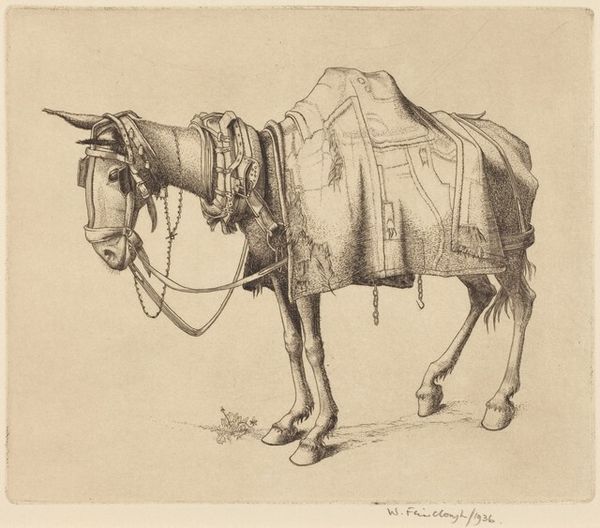
photography, gelatin-silver-print
#
portrait
#
shape in negative space
#
animal
#
shading to add clarity
#
old engraving style
#
photography
#
horse
#
gelatin-silver-print
#
a lot negative space
#
remaining negative space
#
realism
Dimensions: height 183 mm, width 265 mm, height 330 mm, width 488 mm
Copyright: Rijks Museum: Open Domain
Curator: Before us, we have an arresting image—"Opgezadeld legerpaard, en profil gezien"—which translates to "Saddled Army Horse, Seen in Profile." It’s a gelatin silver print from between 1895 and 1913, currently held here at the Rijksmuseum. Editor: It’s quite striking. The starkness of the presentation, almost clinical in its isolation, immediately draws your eye to the materials. The leather of the saddle and tack looks substantial. I'm intrigued by how deliberately it foregrounds labor and its impact on both animal and human. Curator: Indeed. Consider the social context: the transition of military power, the dependence on animals even as mechanization advanced. The very act of photographing the horse in this manner implies a desire to document, categorize, and perhaps control both animal and human labor during a period rife with social and political tension. The power dynamics inherent are rather hard to ignore. Editor: Exactly. And think about the material reality: the silver in the print, the gelatin emulsion, all products of industry and human effort. Even the photographic process itself, reliant on chemical reactions and precise timing, highlights the active role of labor in creating the image. Curator: Let's also consider the symbolism. Horses, historically, are potent symbols of strength, freedom, and nobility. Yet here, this animal is saddled, restrained. How can we examine the gendered symbolism inherent within notions of domination? This restraint imposed reflects the constraints placed upon the working class at this historical juncture. Editor: Right, the harness tells a whole story of controlled power. Think about who made this equipment, the hours of skilled labour gone in into tanning the leather, cutting it to size and so on. Also who is profiting off that industry at the expense of those individuals? Curator: What strikes me too is the pose; the horse faces right, toward a sort of 'future' and progress which at this moment is on the horizon, as we know what WWI looks like when it eventually crashes over Europe a few years down the line, from 1914. It shows something important that the image cannot show, if that makes sense. Editor: That's so interesting, framing it like that allows me to wonder about where the photo was staged, or whether its backdrop was natural. Curator: Investigating art history through the lens of labour certainly offers new viewpoints and that can reveal some interesting aspects within the artworks, as we've shown in this one today. Editor: Absolutely. Considering material conditions can transform how we relate to pieces within the established, capital-driven art world.
Comments
No comments
Be the first to comment and join the conversation on the ultimate creative platform.
